Explore and Challenge: The Pi-Stop Simon Memory Game
Pi-Stop Resource Files
These Pi-Stop resource are available as fully customisable Markdown documents on the Pi-Stop github page.
Each of the guides are also available in PDF format, and in several other automatically generated variants (for example, this includes versions which have instructions for the Model Plus only, or the original model).


Explore and Challenge:
The Pi-Stop Simon Memory Game
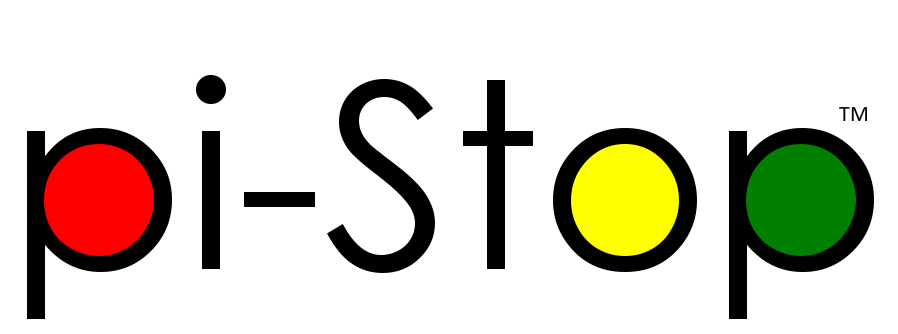
SEE ALSO:
Setup: Scratch GPIO: For instructions on how to setup Scratch GPIO with Pi-Stop (which is needed for this guide).
Explore and Challenge Scratch GPIO: Pi-Stop First Steps: If you’ve not used Scratch before, this will provide a quick introduction to building your first Scratch GPIO program.
Explore and Challenge Scratch GPIO: Pi-Stop Traffic Sequence – Create your own traffic light sequence and learn how to use Scratch GPIO with the Pi-Stop.
In this guide we will use the Pi-Stop to test our memories.
In 1956 a very famous psychologist (someone who studies how we think) called George Miller stated that on average most people will be able to remember up to seven items (plus or minus two).
I wonder if we can prove if Miller’s “Magic Number Seven” is true or not? We can write a game which will test this hypothesis (the theory/idea) by challenging our friends.
Who will have the best memory at the workshop?
Getting Started
As in previous guides, the Pi-Stop should be connected to the Raspberry Pi in Location A, as follows:
Location A for Model A+ or B+ (purchased after July 2014)
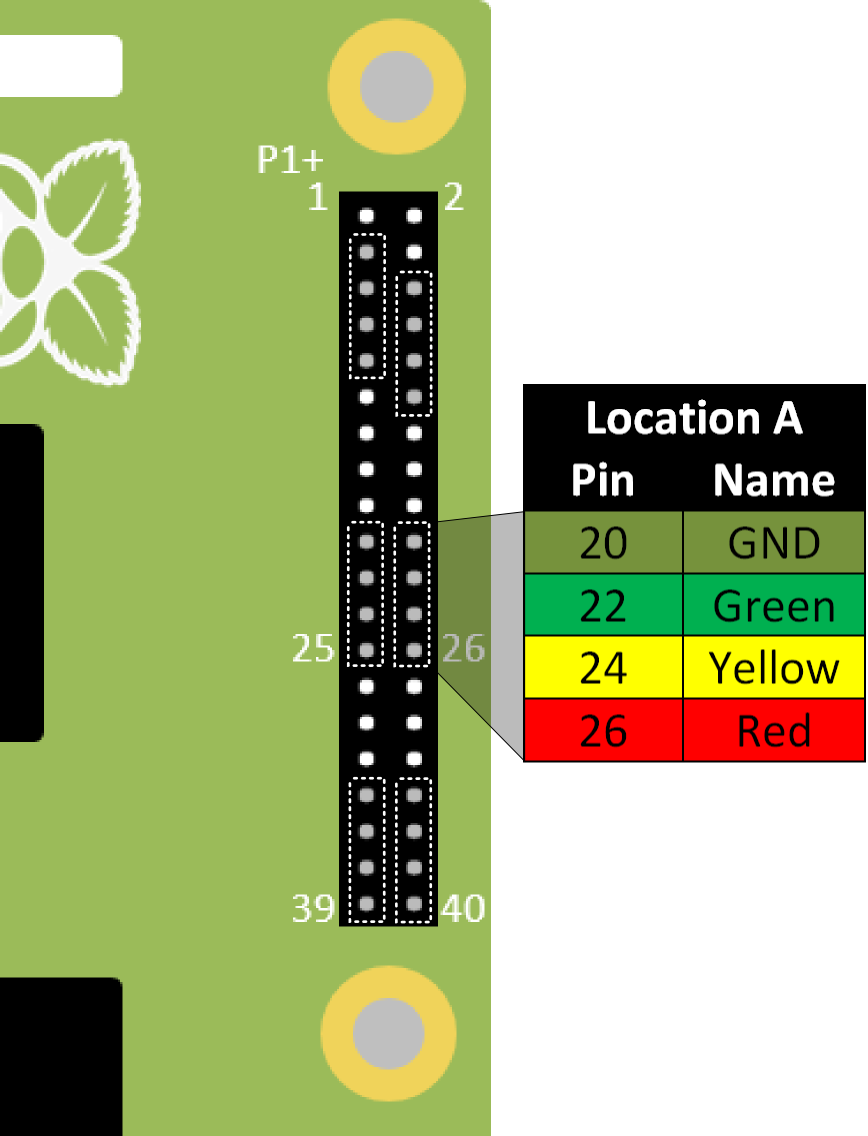
Location A for Model A or B (purchased before July 2014)
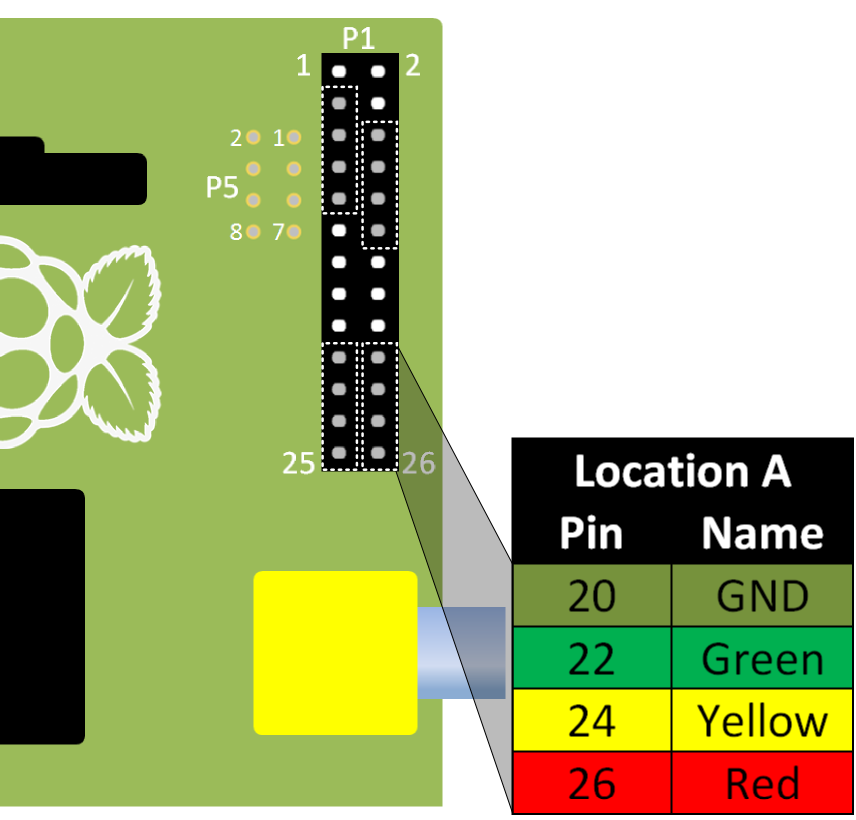
With the Pi-Stop fitted in the correct position you can now power up your Raspberry Pi.
Once you have started the Raspberry Pi desktop, open Scratch using the Scratch GPIO icon:
![]()
Simon Memory Game
The following game is similar to a well known game from the 1980’s which creates an ever increasing sequence of lights which the player has to repeat by pressing the lights in turn.
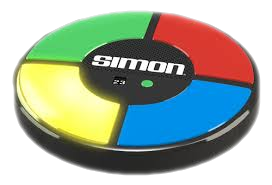
We will create our own version using the three lights of the Pi-Stop and the keys “1”, “2” and “3” on the keyboard.
Setup the game
We ensure that everything is ready when we start a new game.
First we will need a variable for our Score:
- Select the Variables tab and add a new variable by pressing the “Make a variable” button, call it Score and set it to be For all sprites.

We will also need to create a list to hold our sequence of lights, we will call it GameList:
- Press the “Make a list” button, call it GameList and set it to be For all sprites
NOTE: Remember the tick next to it controls if it is displayed on in the main Scratch window.
For this game, being able to see the numbers in the GameList would allow you to cheat, so it is worth hiding it when you are playing it properly (I suggest you leave it visible for now so you can see the game working).
We can now create the first section to do the following:
- Switch OFF all the lights – We can use an ALLOFF broadcast group as we have done in previous guides.
- We reset the Score to 0.
- We empty all any previous items in the GameList
We do this with:

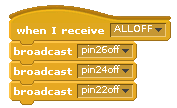
NOTE: All the remaining parts of the game will now go inside the forever block, so the game will continue until we stop it.
Create and play the GameList sequence
Within the forever loop in the main set of blocks, we can now add a new item to the GameList (a random number between 1 and 3) and run a new broadcast group block called PLAY.

The PLAY broadcast group block will go through each item in the GameList, then broadcast one of the following depending on the number in the list:
- 1ON – Switch on RED light (pin26on)
- 2ON – Switch on YELLOW light (pin24on)
- 3ON – Switch on GREEN light (pin22on)
NOTE: You will also need another variable called Item – this allows us to keep track of where we are within the list. Ensure you add this by creating it in the Variables tab.


Test our program
You can now test the program by clicking on the Green Flag and see what the program does.
We should have an ever growing repeating sequence of light patterns!

WORKSHEET: Tick the checkbox marked “The first part of the Pi-Stop Simon Memory Game works!”.
The players turn
The player will need to press the correct keys in order to see if they can match the GameList, we will store the player’s choices in a new List called PlayerList.
We can now add some blocks to the main program inside of the forever loop, to let the player attempt to recreate the sequence of lights stored in the GameList:
- Tell the player to “Repeat the sequence” and ensure the PlayerList has been cleared.
- Allow the player to enter their own sequence by detecting each key press “1”, “2” and “3” and add them to the PlayerList. We will also light up the corresponding LED to show the sequence on the Pi-Stop.
- We will continue waiting for the players key presses until we have the same number of items as the GameList


What’s the Score?
Finally, in the last part of the main game loop we see if the GameList matches the PlayerList:
- If the GameList is the same as the recorded PlayerList we can update the Score and continue (which will add another random light for the player to remember).
- If the GameList is different then we will stop the script, the player made a mistake and the game has ended!

Congratulations!
You finished program should look something like the following.
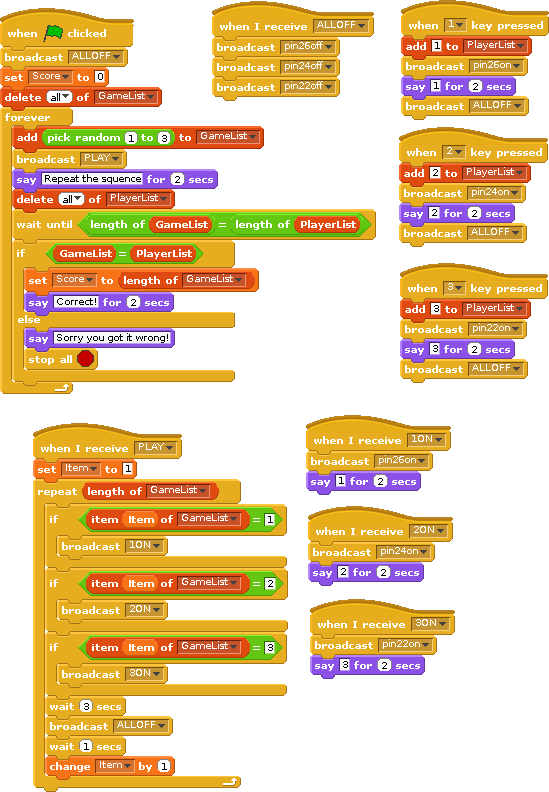

WORKSHEET: Tick the checkbox marked “I’ve created the Pi-Stop Simon Memory Game”.

Don’t forget to write down your best score!
Where to get your Pi-Stop
The Pi-Stop was designed in partnership between 4Tronix.co.uk and PiHardware.com.

The Pi-Stop and accessories are available from the 4Tronix.co.uk shop.

The Pi-Stop workshop materials are licensed under a Creative Commons Attribution-NonCommercial-ShareAlike 4.0 International License
The Pi-Stop name and logo are Trademark of PiHardware.com and the design is Copyright 2014 of 4Tronix.com and PiHardware.com.

